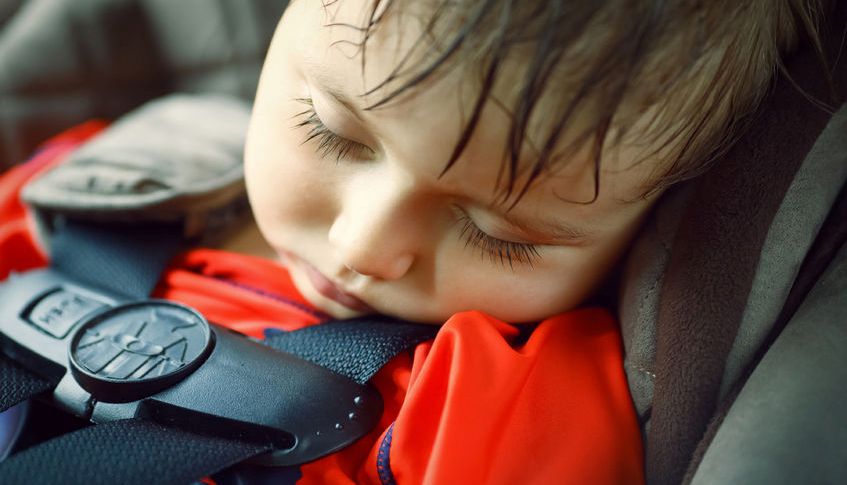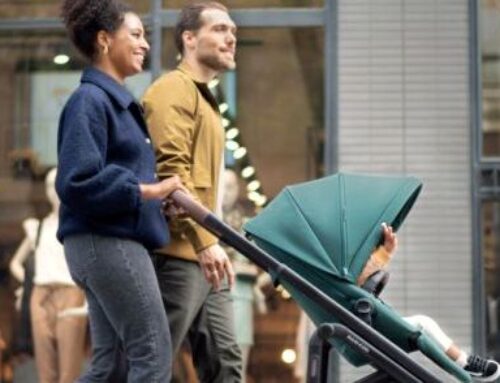We know the horror stories and yet it happens every year: children who do not die from an accident but from overheating because they have been left in the car. How can we stop these fatalities? Italy is the first country to take preventive measures.
Why is leaving a child in the car so dangerous?
Leaving a child in a car is extremely dangerous; the temperature in the car can rise 10 to 15 degrees every 15 minutes. Opening a window helps a little, but has little effect on lowering the temperature. In addition, a child’s body reacts very differently to heat than an adult body. As a result of water reserves, the temperature of a child’s body rises 3 to 5 times faster. And what many people don’t know: overheating can occur within minutes, and the consequences of dying as a result of this in 2 hours.
Another misunderstanding is that accidents of this kind only happen in southern countries. Overheating may just as well happen on days when it’s 22 degrees Celsius outside. Even at this temperature, the inside of a car can quickly rise to 47 degrees Celsius! Especially with our rising temperatures in Northern Europe, we have to be careful.
Figures leaving children alone in a car
Between 2007 and 2009, 26 such cases were known in France and Belgium in Europe, including 7 fatal accidents. Of these, 54% had deliberately left their child in the car, while 46% had forgotten to drop off their child at the agreed location.
Since 1998, it has been recorded in the United States how often children are left behind in cars that are too hot. There have been 800 cases since 1998. Last summer a twin died; their father, who wanted to drive home at the end of the working day, noticed that both of his one-year-old children were still in the back seat. Striking detail: since children have to be transported in the back seat as a result of the front airbag, the number of children who die from overheating has only increased!
The reason parents leave their child in the car
Safety authorities in the United States have tried to make parents and carers more aware of the risks of leaving a child in the car through TV, advertising campaigns, leaflets, etc., but with little result. In 2010, 49 children died after being left in the car and in 2018 this rose to 52 cases, according to KidsAndCars.org.
Tips given to parents
What tips are given to parents now?
- Closing your car door with a remote control is not the same as putting your key in the lock. Get used to looking inside the car before you lock up. Check if all family members are out of the car, even if you think you’re driving alone.
- Put whatever you need on the back seat, such as your smartphone, handbag, a shoe or your lunchbox.
- Put a cuddly toy in the baby car seat, and put it on the co-driver’s seat when your baby is sitting in the car seat as a reminder.
- Provide a daily reminder on your computer or phone to make sure you have dropped your child off.
- Agree with the daycare centre that they will call you if your child has not been dropped off.
- And finally, call the emergency number immediately if you see a child sitting in a locked car.
Leaving a child in the car can happen to anyone
Accidents happen, especially when parents and carers are involved in routine activities. For example when they are on their way from work and to the shelter and back again. Parents who have suffered this can count on criticism. How can you, as a parent, forget your child? Yet it is something that can happen to anyone, specialists say. The VPRO (Dutch broadcasting organisation) broadcast a documentary some time ago: Death of a Child in which fathers and mothers who had been affected by this were followed. An expert explains that it has to do with our memories. We have a memory to plan and a memory to do things on autopilot, such as grabbing keys, opening the door and driving. Who amongst us hasn’t (almost) left his cup of coffee on the car roof at some point of time? When a child is sleeping in his car seat and the parent does everything on autopilot, such as driving to work, it can happen that a child is forgotten. The memory of the autopilot (the basal ganglia) suppresses all other memories, even when it comes to something as important as your child in the back seat.
What can the car seat industry do?
An alarm system offers a solution and initiatives are already in place. This varies from mats with sensors under the seat or sensors in the seat belt. Combined with an alarm and/or push message on your smartphone if you are too far away from the car seat while there is still a child in it. But not all technology works flawlessly and not all systems work on both Apple and Android.
Examples of Car Alert systems:
Cybex/goodbaby introduced the Cybex SensorSafe which consists of a clip that can be attached to the child harness belt. Suitable for Cloud, Aton and Sirona. It gives a signal to the smartphone if it is removed from the car and the device is not turned off.
The Evenflo SensorSafe clip is a similar system.
Chicco has an integrated system of sensors that are processed on the inside of some of their car seats.
Separate systems have the advantage that they are not dependent on any type of car seat. Like BlueBeep that took a first step on the market with the Car Seat Guardian. It is attached to the inside of the harness’s soft shoulder pad and triggers an alarm if the child is not (properly) locked in the car seat, if the child tries to get out of the harness straps, and if parents are too far away from the car.
Remmy is an Italian brand that emits an audible signal when the car’s engine stops and the weight of the car seat does not change.
And the Tippy Smart Pad works with a mat and sensors. An alarm sounds if you are too far away from the car and the weight on the pad does not change.
The iRemind Car Seat Alarm uses a pad with sensors under the seat and an iPhone app to help parents remember.
However, car manufacturers must also take responsibility. We only know two: Nissan Pathfinder and the Hyndai’Santa Fe have a Rear Door Alert system (RDA). If a back door is opened at the beginning of the trip, the car will signal that you should also check the back door when you are in the parking lot.
Italian anti-abandon law enters into force in 2020
Italy is the first government to take action against such accidents. The ‘anti-abandon’ law will enter into force on 6 November 2019. The industry will, of course, need time to produce car seats or equipment that meet these requirements. That is why 120 more days will be given until it becomes a legal obligation, at the end of February 2020.
Content of the anti-abandon law for car seats
The content of the anti-abandon law is as follows:
The driver of M1, N1, N2 and N3 vehicles, registered in Italy or abroad and driven by Italian nationals, when transporting a child under four years of age who is restrained in a car seat in accordance with paragraph 1, shall be required to use a special alarm system to prevent abandonment of children in the car, in accordance with the technical construction and functional specifications laid down by decision of the Ministry of Infrastructure and Transport. (Article 1a of Article 172 of the amended Road Code). The article in Il Sole 24 Ore gives a good overview of the mainly technical content of the decree. For example, parents get 30 euros back from the government if they buy such a proven alarm system. This can be integrated in the car seat, but also in the base of the car alarm such as the alarm if the car belts are not used, or it can be an independent system or device.
Requirements for the Car Alert systems
The current prices of independent systems range from 40 to 75 euros. There are various requirements for these devices. For example, they may only be sold with a declaration of agreement from the manufacturer or authorised representative established in the European Union. Other requirements include, but are not limited to: The devices must be switched on automatically without any additional action on the part of the parent and must be equipped with sensors that recognise the child’s presence. It needs to send a signal to the driver that the device has been activated and the alarm shall be set so as to draw the driver’s attention immediately, by visual and acoustic or physical signals inside and outside the vehicle.
Sources: childsafetyeurope.org, Kidsandcars.org, ENPC








